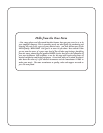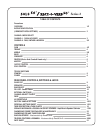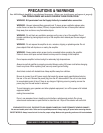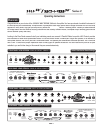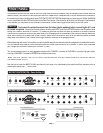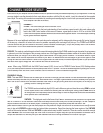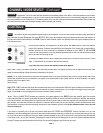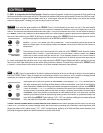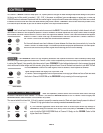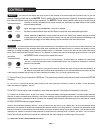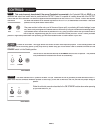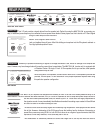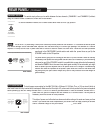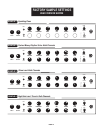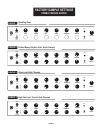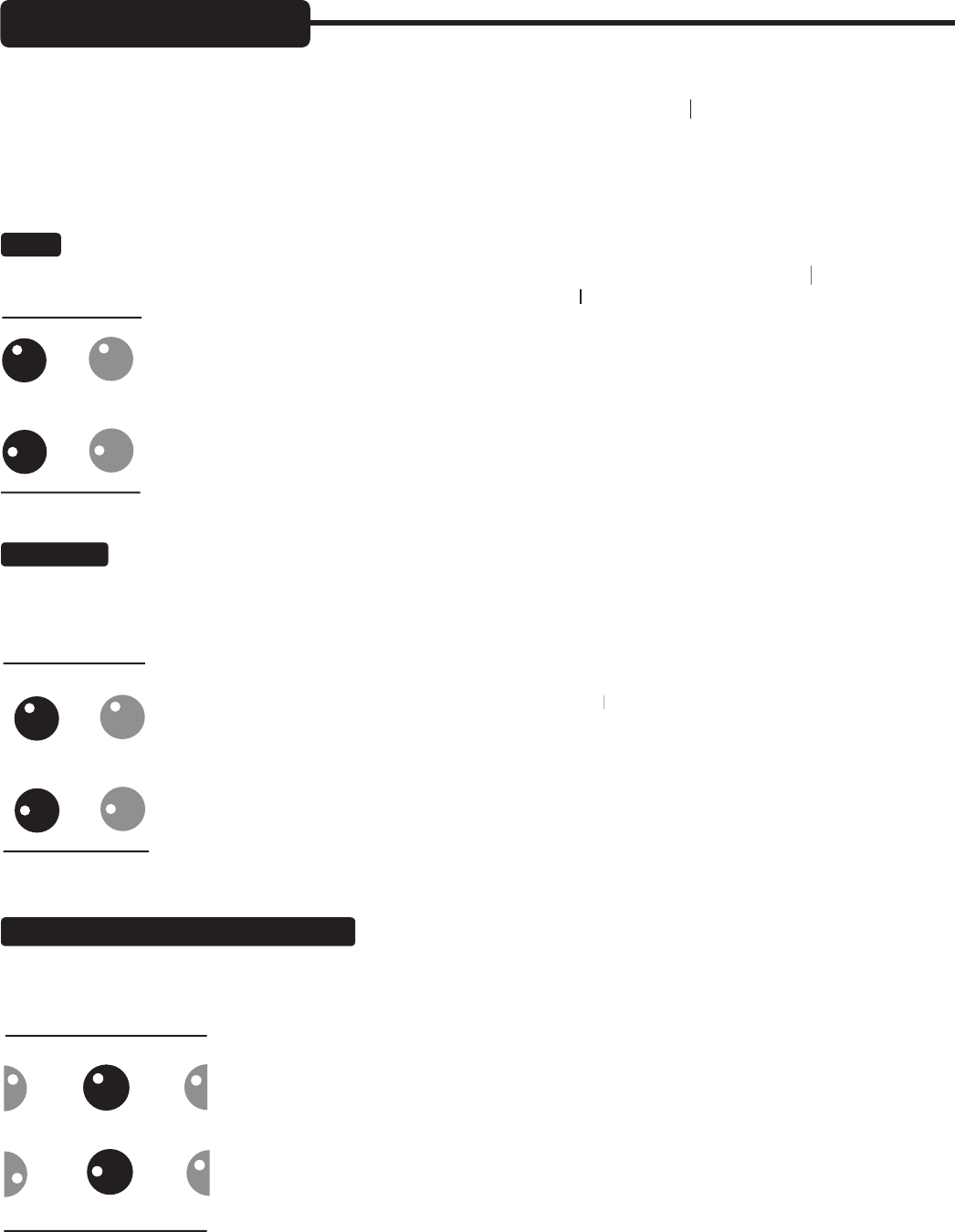
As Channel 1’s
MIDDLE
Control is swept past 1:00, it quickly starts to add gain in these midrange frequencies adding cut and punch.
As the top end of the control is reached, ( 3:00 - 5:00 ) it becomes an additional
gain control
capable of taking both CLEAN and
gain control capable of taking both CLEAN and gain control
PUSHED modes to extremes. Experiment with this cranked region in conjunction with conservative settings of the other tone controls
to balance both sound and feel. While this added fl exibility may make Channel 1’s
MIDDLE
Control a little more tricky to learn at fi rst,
it will become quite valuable as you start to realize the power of this super versatile channel.
BASS:
Last, but not least in the string of tone controls we come to the
BASS
. This control works similarly in both channels in that it
determines the amount of low frequencies present in a sound. However, the actual frequencies and
style of lows
it mixes in changes
style of lows it mixes in changes style of lows
from channel to channel. Like the MIDDLE Control, it falls in line signal-wise
after
the TREBLE Control and the same scheme applies.
after the TREBLE Control and the same scheme applies. after
When the TREBLE Control is set high, the effectiveness of the BASS and MIDDLE Controls is reduced. If
the TREBLE Control is set low these two controls become dominant.
For the most balanced sound and a balance of power between the three rotary tone controls, try to use the
TREBLE Control in its middle ranges. This scenario produces nearly equal representation of all the frequen-
cies on the tone controls and provides a great neutral starting point for further tweaking.
PRESENCE:
The
PRESENCE
Control is a high frequency attentuator that is placed at the end of each channels pre-amp stage
and affects frequencies higher than those of the TREBLE Control. It acts independently of the other rotary tone controls and is crucial
in voicing the Channel. It is a powerful global tone control. Lower
PRESENCE
Control settings darken and, in fact compress the signal
which works well to fatten single note solo sounds, giving them girth and focus. Some of the best lead sounds in your
RECT-O
will
fi nd the
PRESENCE
Control in its lower regions, where a balanced, vocal response is achieved.
Higher settings unleash the mighty roar of your
RECT-O
and this can be great for sparkling clean sounds
RECT-O and this can be great for sparkling clean sounds RECT-O
in Channel 1 and more aggressive crunch rhythm sounds in the high gain modes. Be sure to taunt the beast
that lurks in Channel 2 MODERN as the
PRESENCE
is truly amazing in this most agro mode.
REVERB: RECT-O-VERB / COMBO & HEAD
These self explanatory controls deliver the rich natural reverb sound. Although
the circuit is the same for both Channel 1 & Channel 2, the amount of
REVERB
available is not. In Channel 2 there is slightly less
REVERB
available overall because of this channels’ very nature.
The reason behind this is two fold:
1.)
that it is easier to prevent the massive amount of Gain and signal strength present in either of
Channel 2’s high gain modes from causing unwanted
REVERB
oscillations.
2.)
This channels aggressive nature lends itself more to musical styles where high settings of
REVERB
are simply not traditional. Don’t worry...there is still plenty of
REVERB
for drenched solo
work in both the RAW & MODERN Mode in Channel 2. Simply run the
REVERB
Control a little
higher than that of Channel 1.
CONTROLS:
(Continued)
PAGE 6
HEAD VERSION
MID
BASS
HEAD VERSION
PRESENCE
BASS
REVERB
MAST
ENCE



